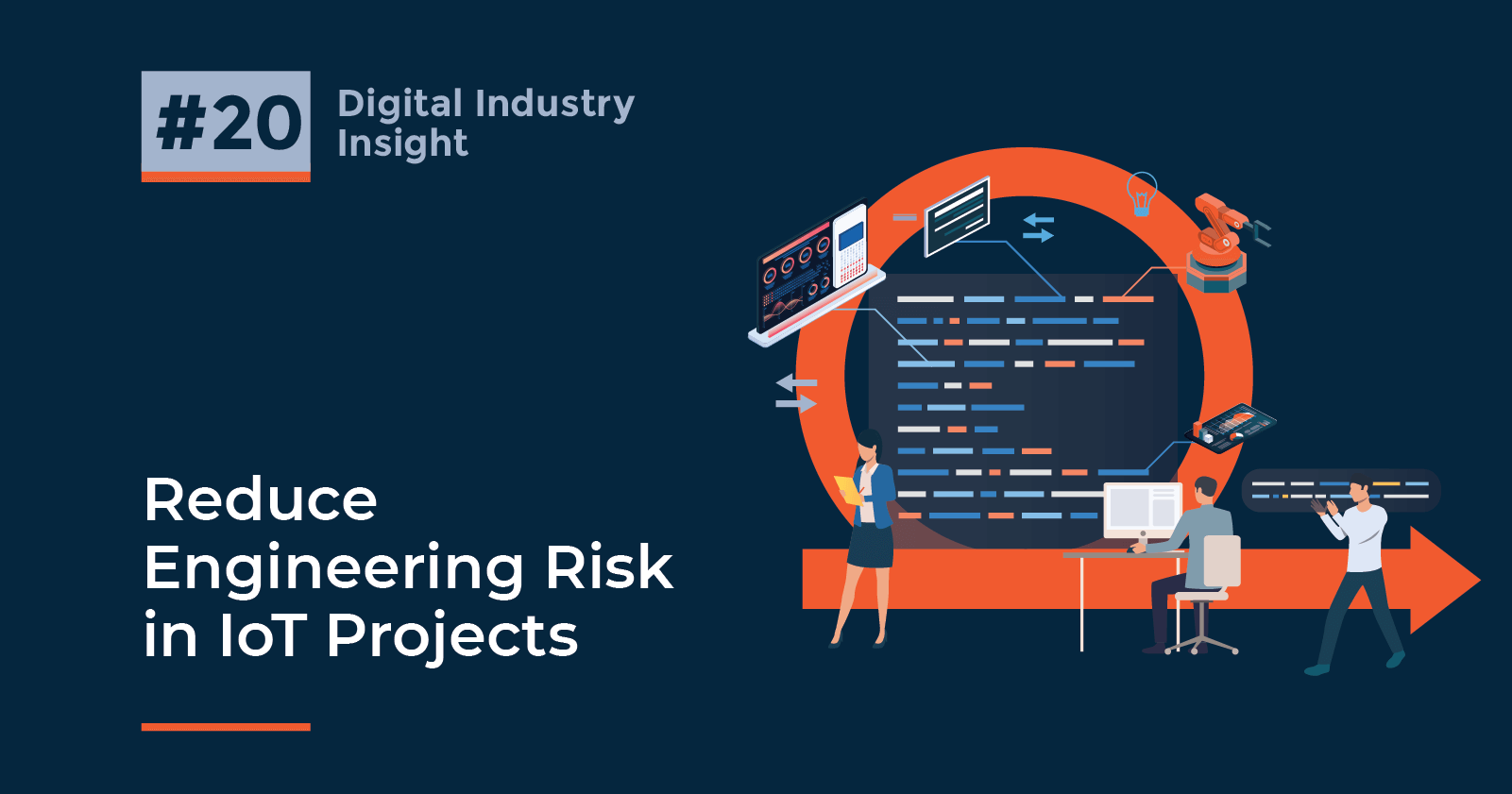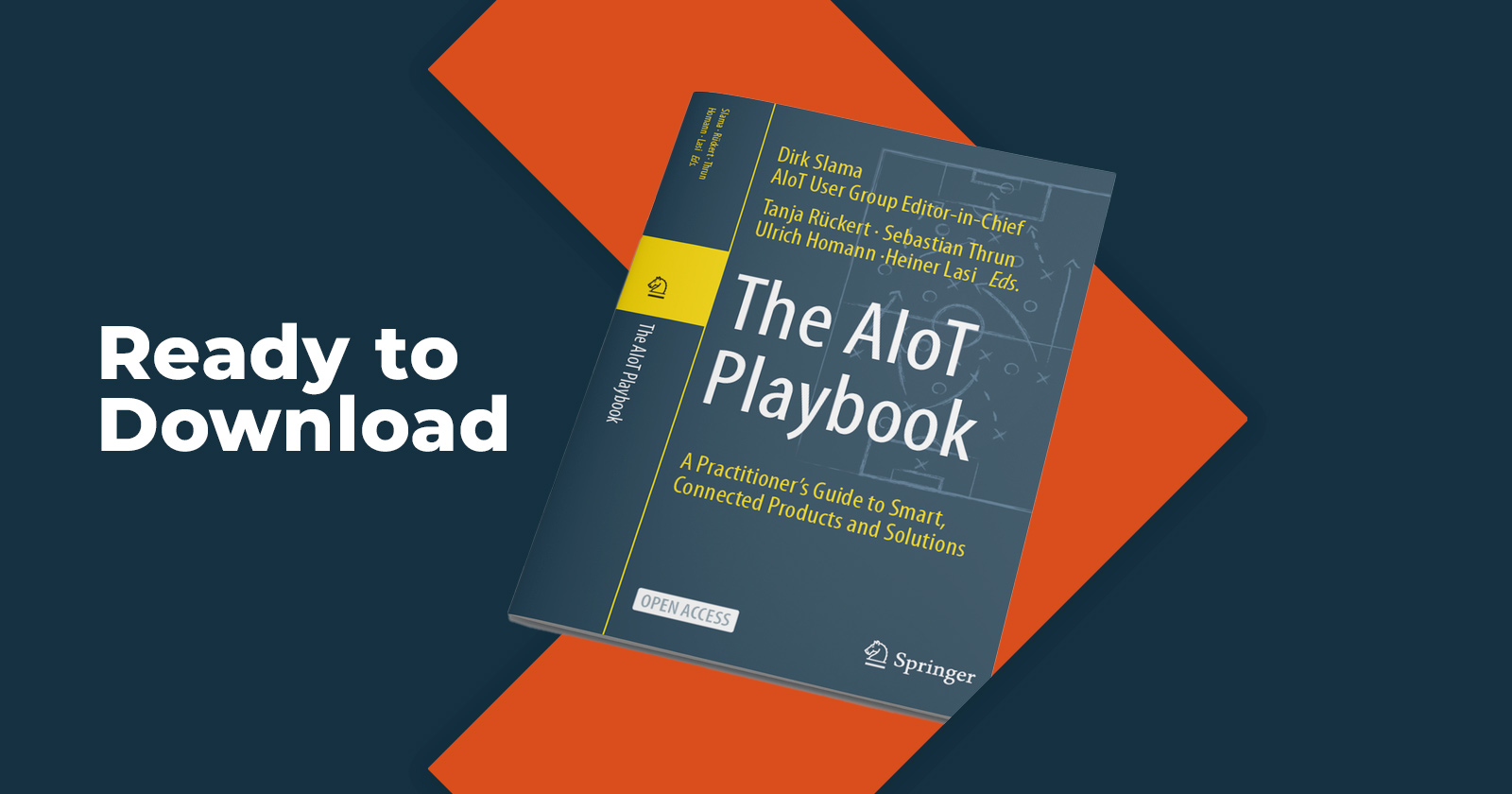Digital Industry Insight #20
How to Reduce Engineering Risk in IoT Projects
Stephen Berard

As discussed in one of our previous posts, [Digital Insight #12], digital transformation progress has been slow in many organizations particularly when executing engineering efforts. This is not surprising given the amount of changes businesses are facing today. Digital transformation is as much about culture as it is about technology. Such changes in culture, processes, and business practices takes time; particularly for industrial companies with traditional new project introduction (NPI) processes. That said, we have seen those that can successfully make this transition yield greater returns and be more competitive than their peers.
Traditionally, many organizational efforts around innovation have centered on a small number of large initiatives. These generally involve making a few large investments in research and development often over a horizon of several years. These efforts start with a lot of fanfare but, many times, fall short of initial expectations. Often this leads to project cancellation or other negative fallout for the organization.
An alternative approach to innovation is to make a lot of small innovation efforts and cultivate those that show promise. This is the approach Eric Ries promotes in his book The Lean Startup which champions a culture of experimentation and validated learning. Here efforts are broken down and analyzed to uncover important underlying assumptions. The team then undertakes small efforts to systematically test and measure the validity of the most critical assumptions. Such learnings get fed back to direct the engineering process.
Below, we present four tips on how to succeed with this approach within your organization. Reach out below to speak with us or share your experiences.
1. Build a Supporting Engineering Culture
The first step is to build a space for innovation to happen and flourish. This requires a framework that promotes small and iterative innovation efforts. New ideas need to be discovered, debated, and validated by the team. In our experience, this is most effective when done with cross-discipline teams that bring together members from business, engineering, and services which allows for a diversity of ideas and perspectives. Smaller teams of between five and eight people have been shown to be highly productive.
The culture needs to support, and in some cases promote, experimentation and smart risk taking. The goal is to maximize learning so as to best deliver value to customers. Failed experiments need to be viewed in a positive light as opportunities to learn and adapt. Done right, these activities yield critical insights into actual customer behavior. Done often, these allow the team to adapt to the dynamics of the market. The result is better products and a more competitive organization.
Such an environment is not a free-for-all. Innovation efforts need to happen within the overall context of the business and vision of the organization. Leaders need to set guardrails in order to direct the efforts of the team. Leaders also need to provide support and coaching that instills a learners mindset within the team.
2. Focus on Business Value
Ultimately, success will not be had if an effort does not deliver value to a customer. The priority of the team needs to be focused on discovering what customers value and, ultimately, delivering that to them. It is important to point out that we need to learn what they truly value, not what the organization assumes they value. While this seems like a subtle point, it is in fact quite fundamental to this approach.
Organizations traditionally embark on large research efforts such as focus groups or similar activities. In many cases, these end up reinforcing our beliefs of the customer rather than uncovering new insights. This so called “confirmation bias” leads groups to believe they are working with definitive and factual information. This has been shown to lead to successfully executing on projects but ultimately failing with the customer.
To combat this, organizations need to focus on observing how customers actually behave vs. how they believe customers behave. The purpose of doing small experiments is to create opportunities to observe customer behavior as directly as possible. By measuring actual customer behavior, organizations can get deep understanding about their customer’s problems and needs. Digital transformation is about understanding where there are unrealized opportunities and delivering solutions that addresses those needs. Get started by choosing a single, simple use-case that addresses a real business problem. Let your team cut their teeth on that, then expand out.
3. Be Smart in How You Measure
Designing how you will measure is one of the most critical elements to this approach. The intent of these experiments is to guide behavior. The output of an experiment should direct the team’s actions, whether it is to continue with the current feature set or make pivot to an alternative. Design your experiments so that the data you collect can be used to make meaningful business decisions. Avoid metrics that look good on paper but lack specificity to direct change.
Metrics need to be something understandable by the people on the team. A team is not likely to succeed in an effort if they are unable to understand why a metric is important or how it is used in decision making. A good heuristic is that anyone on the team should be able to clearly articulate why a metric is important.
4. Think Big, Start Small and Deliver Incrementally
Any change takes time and digital transformation is no exception. In our experience, it is best to make smart and steady progress through small, incremental efforts. Avoid the temptation to go big with large, expensive projects. You will be surprised how small efforts can cumulatively yield big results. When things do not work out, do not be afraid to pivot and rethink your underlying assumptions. The path of innovation is seldom a straight line.
Avoid the temptation to build everything in-house. Instead, leverage the wealth of platforms and services. Today, with the rise of cloud computing there is a rich ecosystem of tools available. The rise of the hacker/maker resources and open source projects have made it possible to assemble larger parts of a solution vs. building from scratch.
Conclusion
Validated learning is a powerful tool when applied effectively to engineering efforts. We have seen success in organizations that successfully apply the above tactics when executing on projects as part of their digital transformation efforts. They have experienced increased innovation while simultaneously reducing risks associated with industrial IoT projects. Success here is not easy and requires a commitment to transforming the culture and processes of the organization.
At Momenta, as Digital Industry strategists and advisors, we would like to find out the unique challenges you run into and learn more about your own experiences. Fill out the form below to connect with me and schedule a free 30 minute call.



